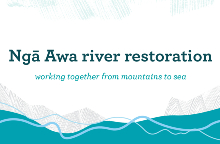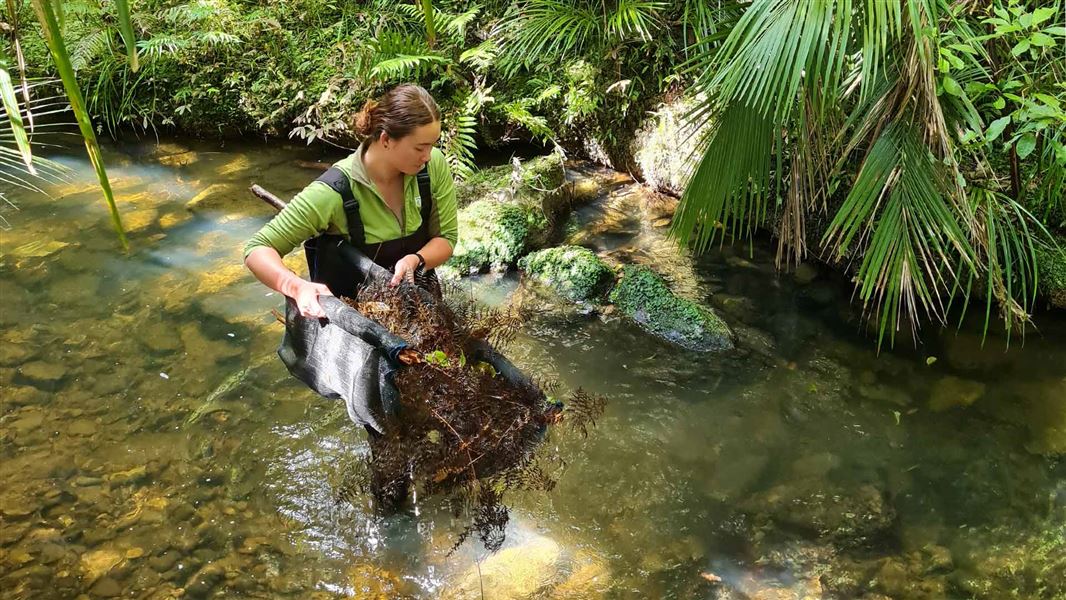
Ngā Awa began in 2019 and is an extension of our existing work to slow the decline in New Zealand’s biodiversity. It focuses on a diverse range of priority river catchments across the country.
Programme objectives and approach
We are working with communities towards healthy, thriving rivers from source to sea.
The programme's objectives are:
- river ecosystems and species are thriving from mountain to sea
- restored rivers are enriching people's lives.
These objectives are being achieved by collaborating with others, co-designing and co-leading with iwi, hapū and whānau and by recognising climate change. Planning the restoration work is underpinned by sound technical and scientific advice.
Local iwi, hapū and whānau are our principal partners and are involved in all aspects of the restoration. We are also working with regional councils, landowners, businesses, community groups, Fish & Game, the Ministry for the Environment and other agencies.
Programme reports and research
See annual programme and engagement reports, and research reports that support our river restoration work.
Programme research and reports
Ngā Awa rivers
Ngā Awa includes rivers from different regions and the east and west coasts of New Zealand.
Rivers that are part of this programme met the following criteria:
-
- the headwaters were in a natural condition
- sections of the catchment nearer the coast (lowland areas) were in good condition
- important ecosystems were present
- local communities were interested in or already involved in restoration work
- the catchment had some factors that could be fixed or improved
- there was a connection to different types of habitat on public conservation land
- some threatened fish species were present.
We are working with iwi, hapū and communities to restore the biodiversity of the Awapoko, Oruru and Oruaiti Rivers.
We are working with Te Roroa and project partners for the long-term restoration of this river.
Our work is focussed on restoring the biodiversity of the Hōteo catchment in northern North Island.
We are working with mana whenua and communities to restore the biodiversity of this river.
This project enables DOC to practically support the aspirations of iwi, hapū and whānau for the river’s health and wellbeing.
Waikanae ki Uta ki Tai is a project to restore the catchment from mountains to sea.
Through the Te Hoiere Project we are working together to restore the mauri of the land, waters and coast.
We are working with others to restore this river on the South Island’s West Coast.
Ko te Whakahaumanu o te Rakitata Awa is working to restore the mauri of the river from mountains to sea.
Te Mana o Taiari is a collaborative project to restore the river ki uta ki tai, from mountains to sea.
We are working in partnership with others to restore the biodiversity of this stream in Southland.
